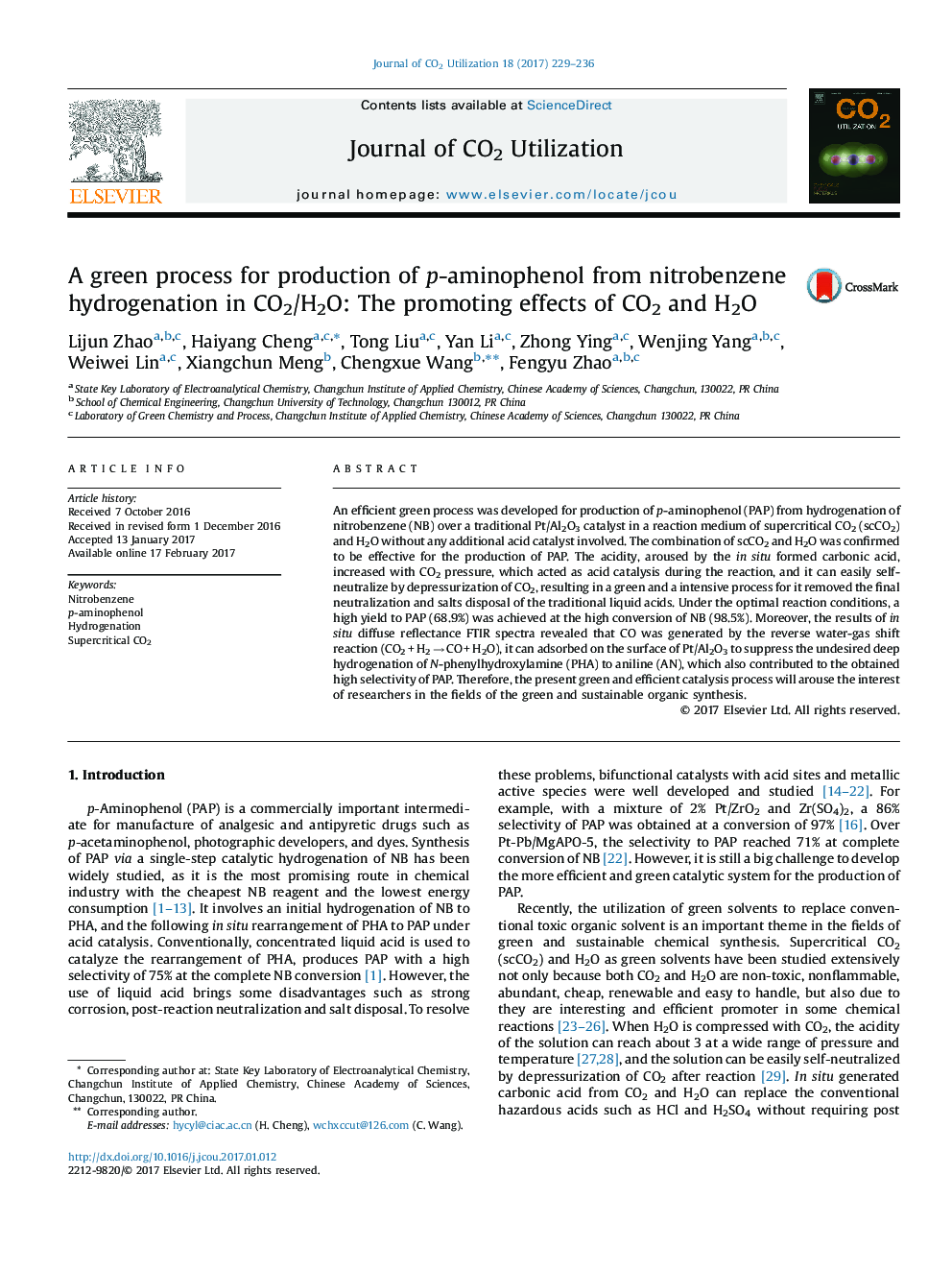| Article ID | Journal | Published Year | Pages | File Type |
|---|---|---|---|---|
| 6456228 | Journal of CO2 Utilization | 2017 | 8 Pages |
â¢ScCO2-H2O was an effective medium for the production of PAP from NB without acid.â¢A high yield of PAP (68.9%) could be achieved at the high conversion of NB (98.5%).â¢The migration of PHA was accelerated as the decrease of droplet size.â¢The rearrangement of PHA was improved as the increased acidity.â¢In situ generated CO from CO2 could prohibit the hydrogenation of PHA to AN.
An efficient green process was developed for production of p-aminophenol (PAP) from hydrogenation of nitrobenzene (NB) over a traditional Pt/Al2O3 catalyst in a reaction medium of supercritical CO2 (scCO2) and H2O without any additional acid catalyst involved. The combination of scCO2 and H2O was confirmed to be effective for the production of PAP. The acidity, aroused by the in situ formed carbonic acid, increased with CO2 pressure, which acted as acid catalysis during the reaction, and it can easily self-neutralize by depressurization of CO2, resulting in a green and a intensive process for it removed the final neutralization and salts disposal of the traditional liquid acids. Under the optimal reaction conditions, a high yield to PAP (68.9%) was achieved at the high conversion of NB (98.5%). Moreover, the results of in situ diffuse reflectance FTIR spectra revealed that CO was generated by the reverse water-gas shift reaction (CO2 + H2 â CO + H2O), it can adsorbed on the surface of Pt/Al2O3 to suppress the undesired deep hydrogenation of N-phenylhydroxylamine (PHA) to aniline (AN), which also contributed to the obtained high selectivity of PAP. Therefore, the present green and efficient catalysis process will arouse the interest of researchers in the fields of the green and sustainable organic synthesis.
Graphical abstractScCO2-H2O was an effective and green medium for production of PAP from the hydrogenation of NB (Conv. 98.5%, Sel. 68.9%) over Pt/Al2O3 catalyst, the acidity and CO formed in situ were demonostrated to promote the formation of PAP.Download high-res image (227KB)Download full-size image
